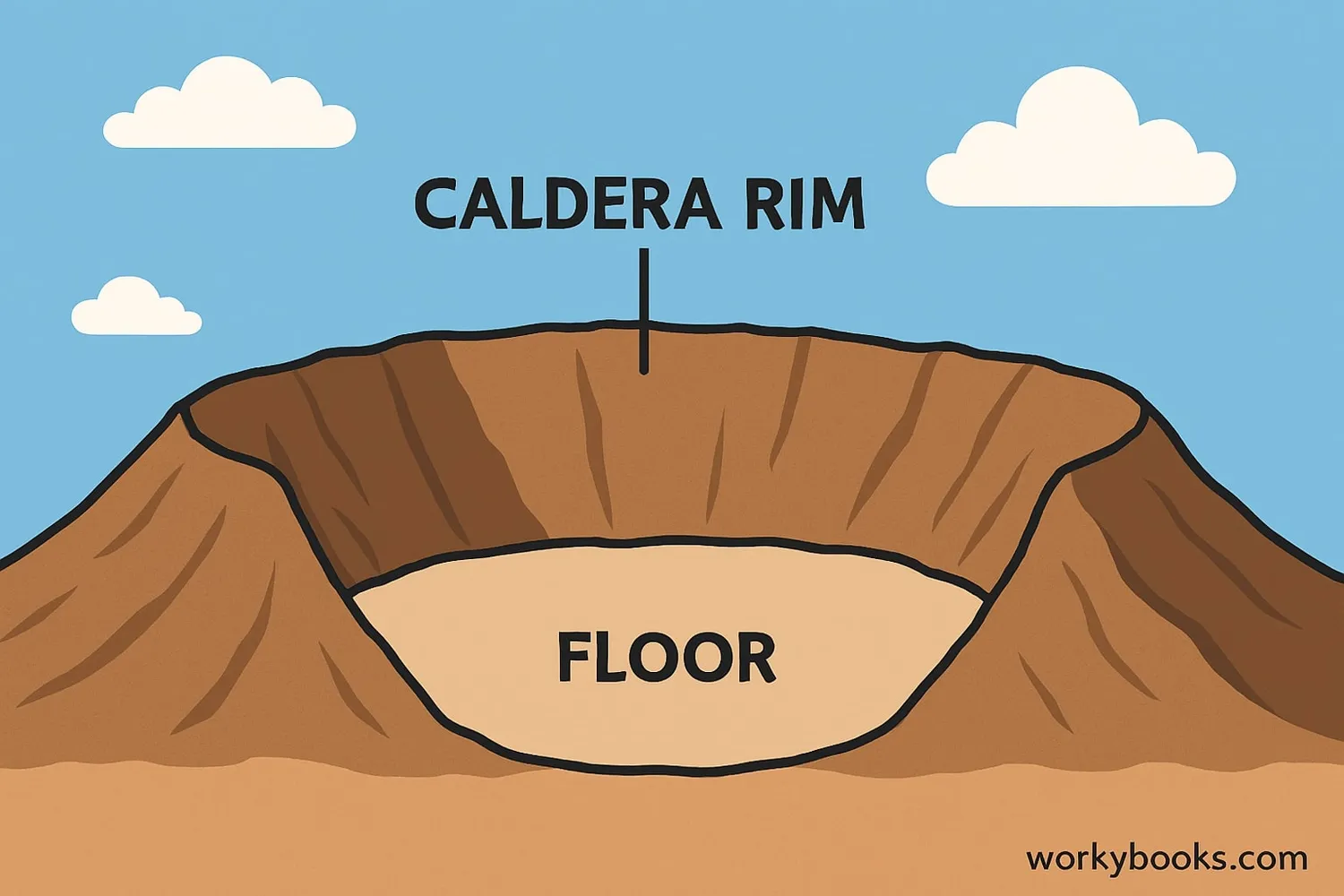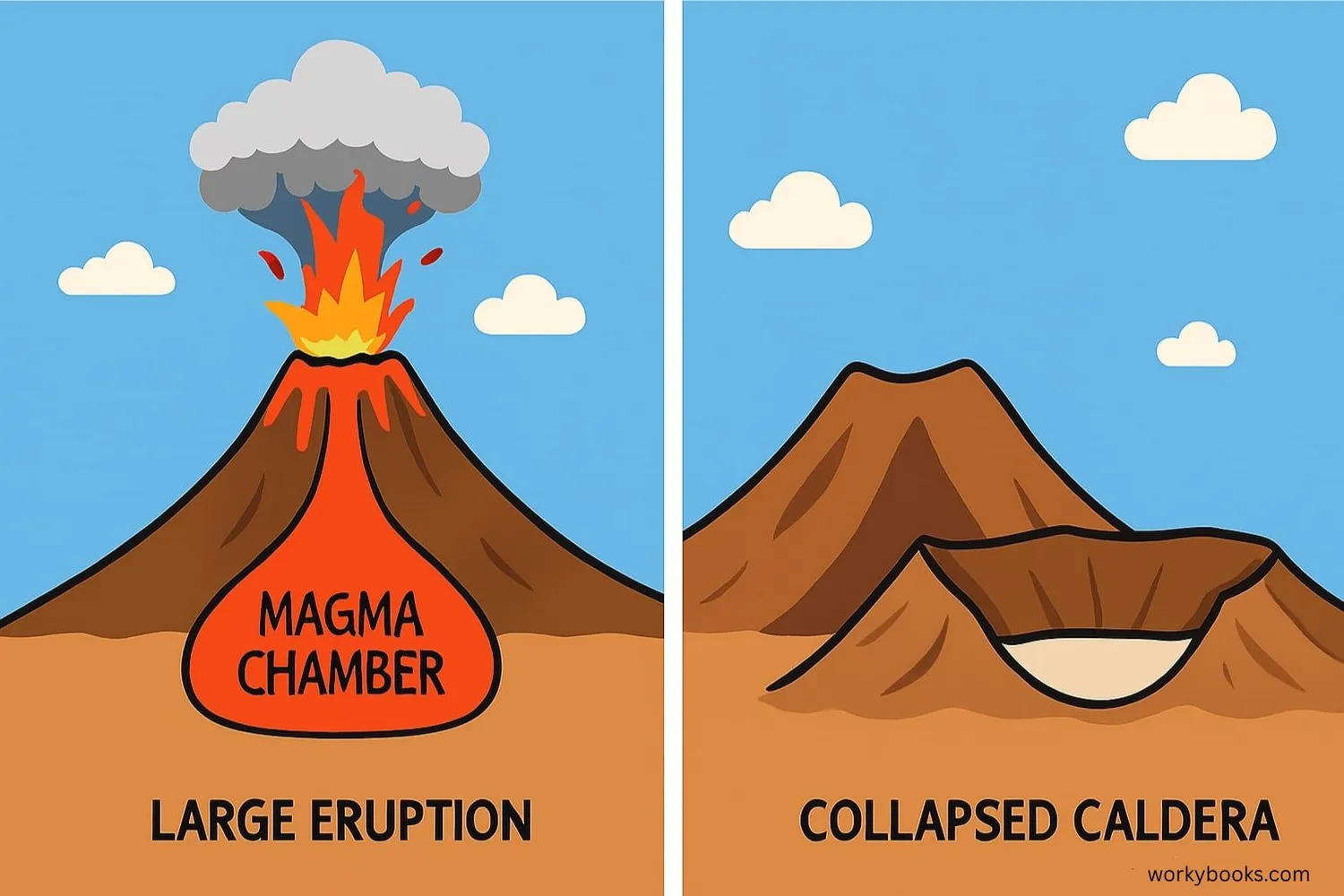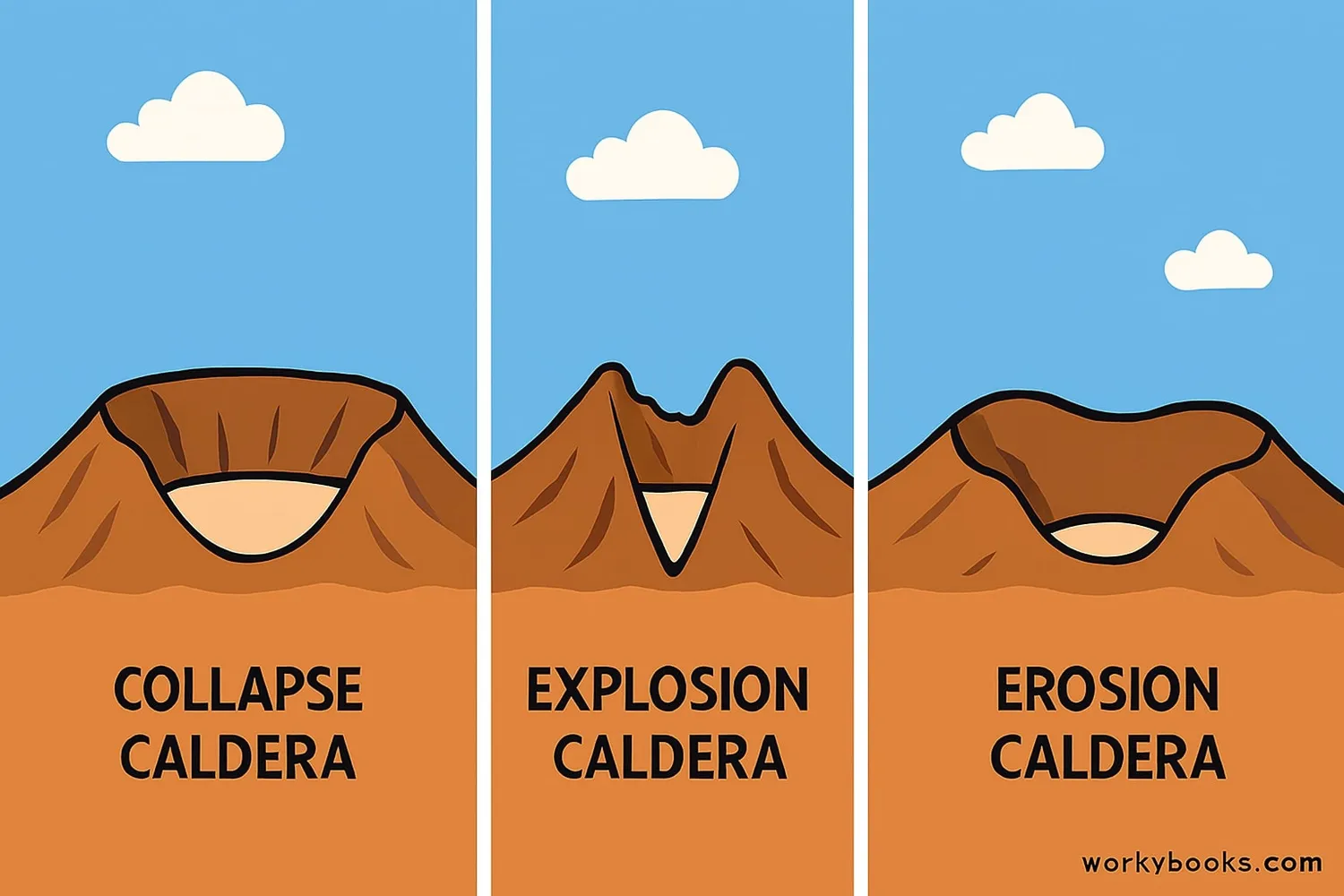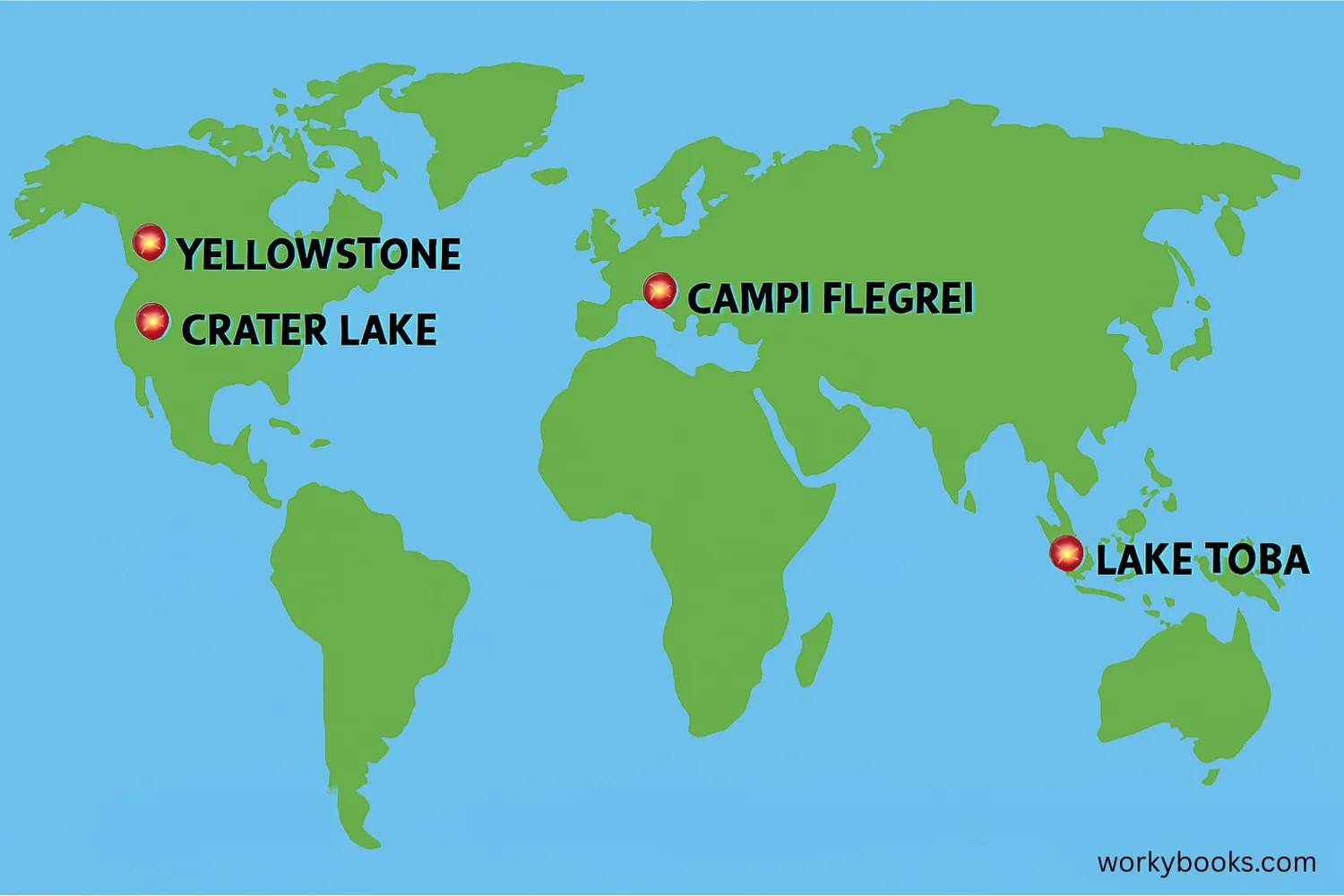Caldera - Definition, Examples, Quiz, FAQ, Trivia
Discover how massive volcanic eruptions create enormous craters that shape our planet!
What is a Caldera?

A caldera is a large, bowl-shaped depression that forms when a volcano collapses after a massive eruption. The word "caldera" comes from Spanish and means "cauldron" or "cooking pot" - which perfectly describes its shape!
Unlike regular volcanic craters that form at the top of a volcano, calderas are much larger and form when the magma chamber beneath a volcano empties during an eruption. Without the support of the magma below, the ground above collapses, creating a huge depression that can be miles across!
Did You Know?
The Yellowstone Caldera in Wyoming is so large (about 34 by 45 miles) that you could fit entire cities inside it!
How Calderas Form

Calderas form through an amazing geological process that happens after some of the largest volcanic eruptions. Here's how it works:
Magma Builds Up
Molten rock (magma) collects in a large chamber beneath the volcano
Massive Eruption
The volcano erupts violently, emptying the magma chamber
Chamber Empties
With the magma gone, the chamber becomes mostly empty
Ground Collapses
The land above the empty chamber collapses downward
Caldera Forms
A large, bowl-shaped depression is created
This process can happen very quickly during a single enormous eruption, or more slowly over multiple smaller eruptions. The largest calderas form during "super eruptions" that are thousands of times more powerful than typical volcanic eruptions.
Geological Process
Caldera-forming eruptions are among the most powerful natural events on Earth, capable of changing global climate for years by releasing massive amounts of ash and gases into the atmosphere.
Types of Calderas

There are several different types of calderas, each formed in slightly different ways:
Collapse Calderas
Form when the roof of the magma chamber collapses after eruption. These are the most common type.
Explosion Calderas
Created by extremely violent explosions that blast away the top of the volcano.
Flood Basalt Calderas
Form when enormous amounts of lava flow out, causing the ground above to sink.
Calderas can also be classified by their shape and size:
• Shield Volcano Calderas: Usually smaller and form on broad, gently sloping volcanoes
• Stratovolcano Calderas: Form on steep, cone-shaped volcanoes and can be quite large
• Resurgent Calderas: The largest type, often dozens of miles across, with a domed center that gradually rises after formation
Importance and Famous Examples

Calderas are important geological features that teach us about Earth's volcanic history and potential future eruptions. Many calderas become beautiful lakes or fertile land that supports diverse ecosystems.
Ecological Importance
Calderas often create unique habitats with rich soil that supports diverse plant and animal life
Water Resources
Many calderas fill with water to become important lakes that provide drinking water and support ecosystems
Scientific Value
Calderas help scientists understand past eruptions and predict future volcanic activity
Some famous caldera examples include:
• Yellowstone Caldera (Wyoming, USA): One of the largest active volcanic systems in the world
• Crater Lake (Oregon, USA): A beautiful lake formed in a caldera created about 7,700 years ago
• Santorini (Greece): A partially submerged caldera that forms a stunning archipelago
• Lake Toba (Indonesia): The largest volcanic lake in the world, formed by a massive eruption about 74,000 years ago
Caldera Quiz
Test your caldera knowledge with this quiz! Answer all 5 questions to see how much you've learned.
Frequently Asked Questions
Here are answers to some common questions about calderas:
Volcano Trivia
Discover some amazing facts about calderas and volcanoes!
Supervolcano Power
The eruption that created the Yellowstone Caldera was about 2,500 times more powerful than the 1980 Mount St. Helens eruption!
Deepest Lake
Crater Lake in Oregon is the deepest lake in the United States at 1,949 feet (594 meters) deep. It's so deep because it formed in a massive caldera!
Caldera Islands
The Greek island of Santorini is actually a partially submerged caldera. The spectacular cliffs are the remains of the volcano that collapsed during a massive eruption around 1600 BCE.
Climate Changers
The eruption that created Lake Toba in Indonesia about 74,000 years ago may have caused a global volcanic winter that lasted 6-10 years and possibly a 1,000-year cooling period!


